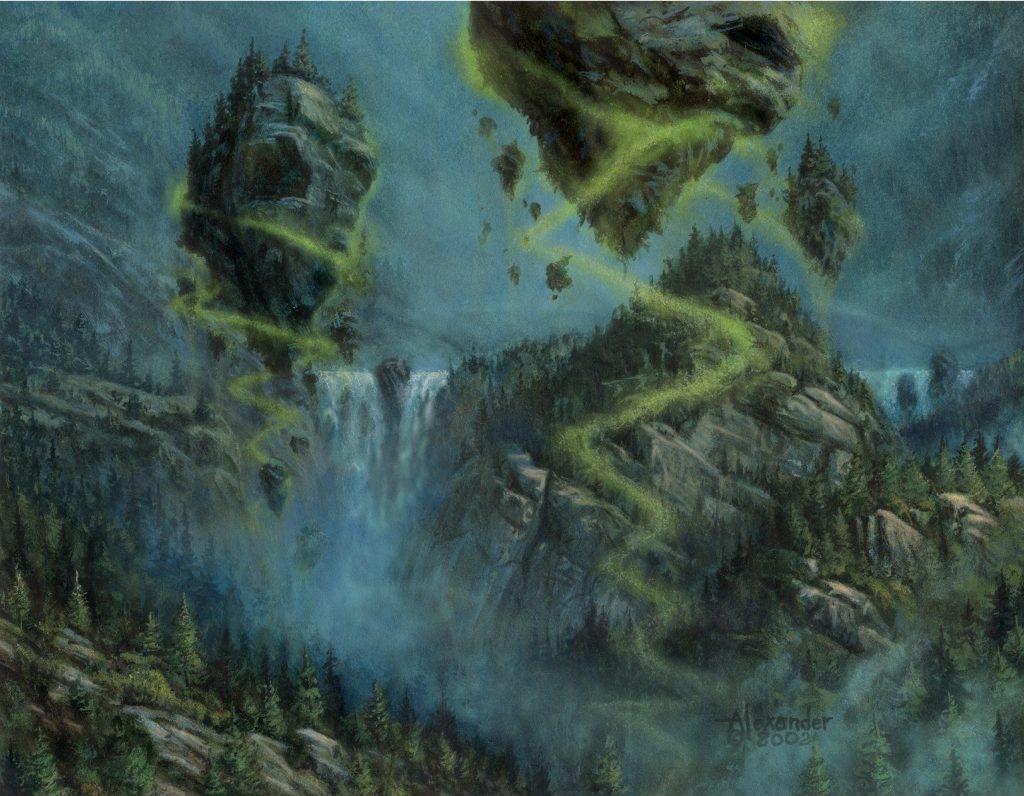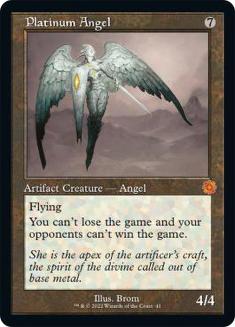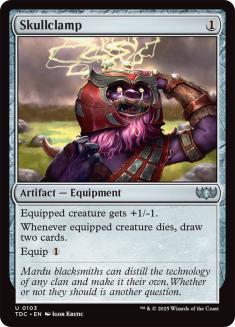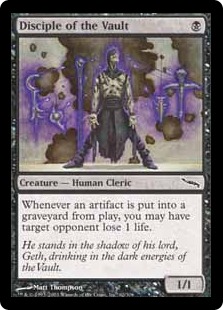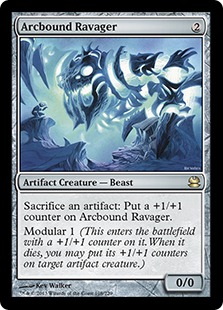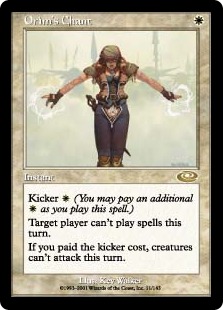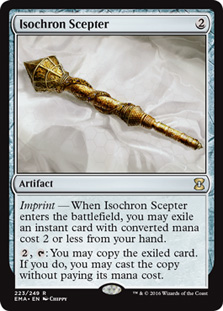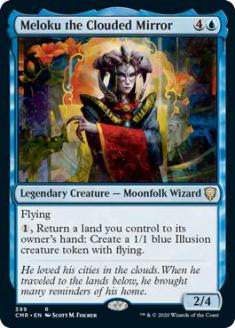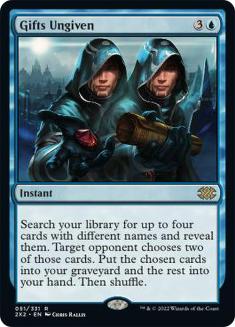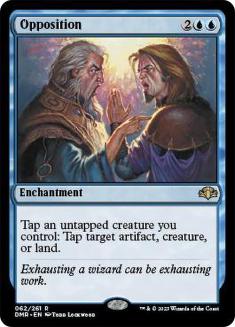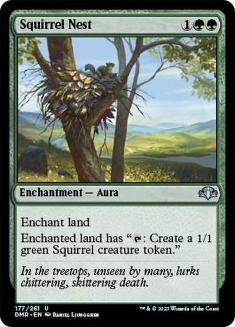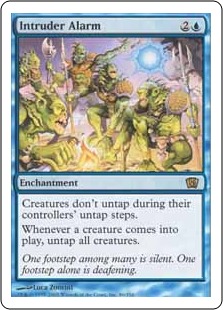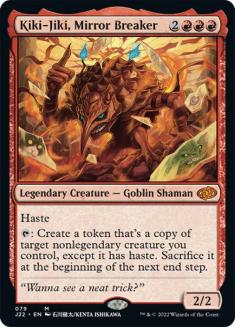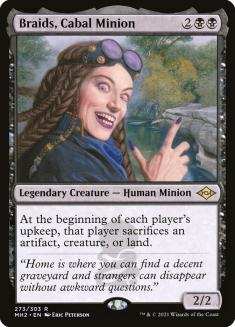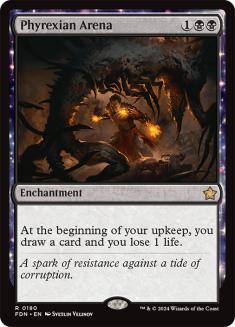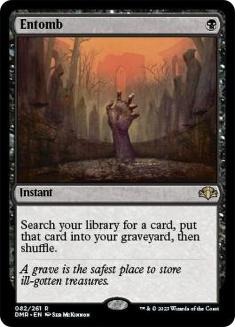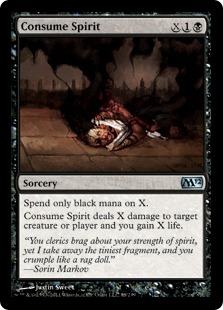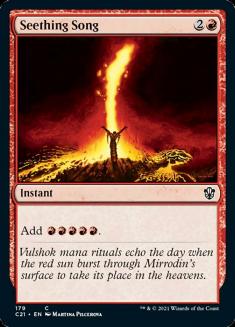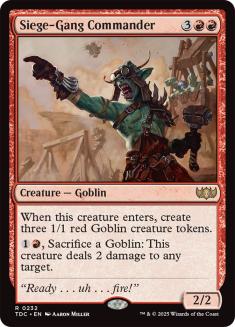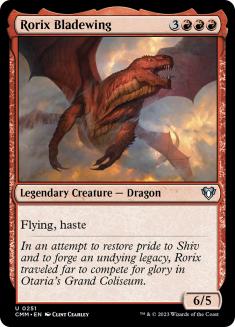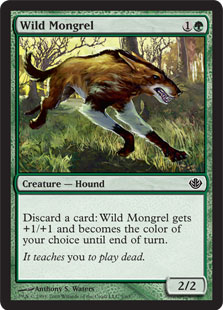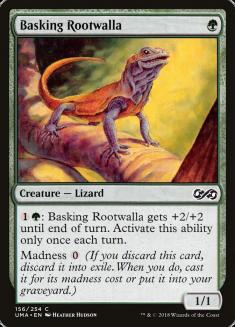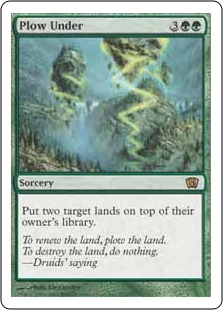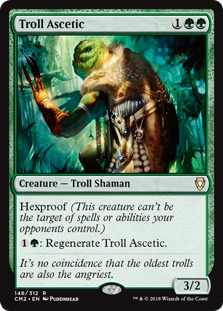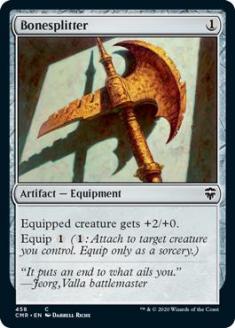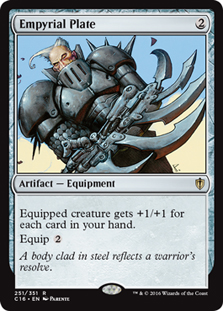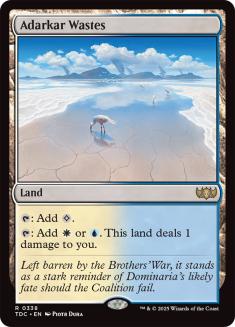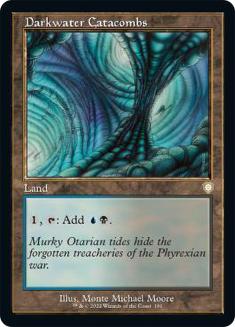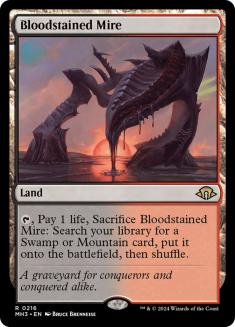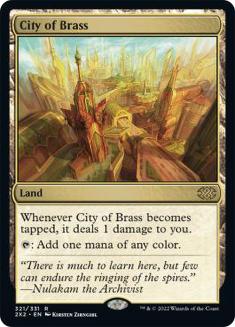The year is 2005. There are holes in the knees of my jeans, which would have been in style had I paid the gold price rather than the iron price for the wear. There’s some homework I should probably be doing, but I’m sure I’ll get to it later. I’ve been told that there will be severe consequences if I don’t maintain a B average, and as such, it’s second nature for me to gauge what it feels like to accomplish 80% of something. I’m drinking Mountain Dew LiveWire, listening to Linkin Park, and playing bizarre kitchen table Magic decks with a small circle of other socially awkward high school sophomores. Well, we’re playing on the basement floor, but you take my meaning. I’d do a lot of things differently if I got another crack at adolescence, but I wouldn’t trade my perhaps-not-so-secret identity as a nerd for the world.
Last week, I introduced the first module of my Time Capsule Cube, which is a Twobert containing only cards from Alpha through Prophecy. This week I’ll be going over the second module, which is a Twobert featuring cards from Invasion through Saviors of Kamigawa.
The nostalgia for this module is significantly higher for me than the first because I started playing during Onslaught block. Cards from Odyssey block were still getting a lot of attention, and Invasion was such a success that there was plenty of it around as well. This era would mark my first Friday Night Magic, my first Prerelease, and even the first time that I quit Magic! I couldn’t countenance a card like Platinum Angel existing, and I needed a couple of months to get myself sorted.
Something that newer players and younger readers might not immediately register is that engaging with Magic at this time was much different from how it is today. Any research I did on the game was on dial-up internet, for starters. The technology was worse and the content available was not nearly as abundant. Of course, I was only starting to get into Magic, so I was less looking at decklists and more looking at suggestions similar to the cards that I was buying online with help from a friend’s mom. My parents weren’t too keen on letting me use their credit cards for that sort of thing.
We’re living in the year 2022, though, and this Cube project isn’t about rebuilding my Soilshaper deck. The goal is to present something evocative of this stage in the game’s design, and to highlight the cards that saw serious play at this time. The elephant in the room for this era is Ravager Affinity, so I’ll nip that in the bud before we get into things today.
It’s easy to fit small package combos into a Cube, but something like Ravager Affinity either eats a ton of slots or falls flat. I didn’t bother trying to make Arcbound Ravager work here and elected to represent Mirrodin through other archetypes that the block facilitated, and there was indeed a lot going on there once you got past all the cards that they had to ban. If you are looking to Cube with Arcbound Ravager, though, check out my Artifact Twobert!
I could have featured Skullclamp if card slots were my only concern, but I’m calling it and Umezawa’s Jitte out as highly significant cards from this era that are essentially non-starters for this Cube. I might swap them in if I’m feeling nostalgic for the days of losing to Jitte, but these cards often detract more from gameplay than they add to nostalgia. Not to mention that, if we were focused strictly on nostalgia, we’d be playing Jitte and Skullclamp mirrors, not lopsided matchups.
Enough general reminiscing, though. Let’s see what that environment looks like. I’ve put the list on Cube Cobra.
I would describe this module as a beautiful disaster. There are some cards that I love here because of the context of the Cube, and there are some elements that make clear how much better we have things today. That’s a lands column that only a mother could love, but more on that later. Let’s break down what’s going on in this module by color.
White
Once again, white does the best job of bringing beatdowns, but there are more incentives to play non-aggressive white decks here than in the first module. Some of these are creature-oriented, with Exalted Angel ruling combat in this era; some are controlling; and we even get access to a brutal white combo deck with Orim’s Chant.
Decree of Justice and Eternal Dragon were once staples in both Constructed and Cube, and they get a chance to relive their glory days here along with Akroma, Angel of Wrath. The days of Armageddon are over at this point, but Hokori, Dust Drinker was fully capable of ending games in similar fashion.
We also start to see examples of how the Time Capsule Cube breaks singleton across modules, and highlights which eras most prominently featured some of the game’s most iconic cards. Both Wrath of God and Savannah Lions were being reprinted and heavily played in this era, and you can also see the wheels turning towards the future with them sitting alongside Isamaru, Hound of Konda and Akroma’s Vengeance.
There are a few hatebears and protection double-pipped two drops missing from the Cube, like Hand of Honor and Silver Knight, but I feel that Eight-and-a-Half Tails makes clear that such creatures were still very much a part of the game. Whipcorder saw plenty of play in its day and adds to morph diversity. That might sound like an insignificant point, but way more morphs were played once upon a time, and it is more fun when there is some guessing game to playing against them. Going a little lighter on Mono-White Aggro cards opens up space for much cooler cards like Yosei, the Morning Star as well.
Blue
If the only good thing I had to say about the blue column of this Cube was that it gave me reason to Cube with Meloku the Clouded Mirror again, that would be enough. I never learned much about how to play after I untapped with Meloku back in the day because my opponents would always concede. Now I have a fresh opportunity to figure out Meloku math!
Beyond that, though, there are all kinds of cool counterspells and card advantage cards present. My favorite card in blue for this Cube is Gifts Ungiven, because there’s nothing deterministic or even all that remarkably powerful about the card featured here. We’re not getting Unburial Rites. We’re sure as hell not getting deterministic Storm packages. Instead, we’re getting some value cards and, if we’re lucky, an Eternal Witness and a way to recur the Witness. This won’t do it for the “I like to Cube with the good cards” crowd, but it speaks deeply to those of us who want to feel something.
On the reprint train, we see the last hurrah for Counterspell, Mana Leak continuing to demonstrate its value as a Constructed staple, and Force Spike getting another shot at forcing everyone to play off-curve. Opposition and Intruder Alarm also show up as reprints, though they did not make it into the first module. Other people like Opposition far more than I do, so I wanted to have it in one module but not two, and Squirrel Nest Opposition was a charming enough deck for me to place it here. Intruder Alarm wasn’t a serious consideration for the first module, but it shows up here alongside Kiki-Jiki, Mirror Breaker to give an early taste of Splinter Twin combo.
On that note, blue just gets access to several combos in this module, similar to the first module. Upheaval has made its way out of every other Cube I’ve tried it in for dragging games out and being overly repetitive, which makes me more sympathetic to including it here, and to be fair, excluding it would feel somewhat disingenuous to this era. I included Mind’s Desire and Brain Freeze because I’m an irredeemable Storm apologist, and while they’re perhaps overly ambitious, I’m not going to cut them and you can’t make me.
Black
And Tendrils of Agony and Cabal Ritual aren’t going anywhere either!
A lot of the black column pays homage to the Mono-Black Control decks of this era, and while those decks didn’t hold up well at all, it’s just the direction to take black that makes the most sense. There are also a handful of very powerful cards like Braids, Cabal Minion and Phyrexian Arena that give real incentives to draft controlling black decks.
Duress and Terror ride the reprint train here, and are cards that you will see more of in future modules. Terror is actually quite a lot better in this Cube than it was when it was reprinted in Mirrodin with artifacts generally dominating Standard, but it did show up in Constructed some at this time.
Entomb is a funny one given that it’s usually incredibly powerful for Reanimator decks, but in this module it’s not clear that it does more to amplify your Zombify than merely cycling Scion of Darkness. While Entomb into Death is the dream, that will only come up so often. Entomb will absolutely scale with creatures and reanimation effects when this module is played alongside others, and I rather like how it’s just kind of fine here but becomes a real force in conjunction with cards from other eras.
Consume Spirit is an admittedly odd choice, so I’ll walk through that one. Corrupt was the card that you would typically see at the top end of Mono-Black Control decks, but two-color decks with the lands in this module don’t support Corrupt well at all, and Cabal Coffers actually just does more for Consume Spirit. I had considered Soul Burn, but the additional mana upfront was a deal-breaker for me. I also saw having Consume Spirit as a second Drain Life when this module is drafted in conjunction with the first module as a relevant contribution to some combo decks.
Innocent Blood and Barter in Blood were two cards that I initially considered, but as I whittled the list down, it felt like black’s strengths tended to rely on keeping some number of creatures on the battlefield and racing. Chainer’s Edict fills the Edict role well, and Bane of the Living offers a much better fit in the “answering multiple creatures” department. Not to mention that it increases the morph density.
Red
Flametongue Kavu really ain’t what it used to be, but it can definitely still hang here. For the most part, red in this module deals damage and destroys lands. One of the more significant red decks from this era used Chrome Mox and Seething Song to power out Arc-Slogger. While I excluded Arc-Slogger for not being much of a Cube card, you do see some of the framework of a “Big Red”-style deck in this column.
With Champions of Kamigawa being the last Standard-legal printing of Stone Rain and Molten Rain being a very significant card for red decks at the time, it only makes sense to offer some Ponza support. The Dwarven Blastminer is kind of dirty when you consider how bad the nonbasic lands in this module are, but you know what, that’s just how things were back then. And don’t make me tap the sign about morph density.
Sulfuric Vortex is among the best Cube cards of all time for aggressive mono-red decks, but this power is decently balanced by weaknesses red had in other spots in this era. There just aren’t many good cheap red creatures, and trash like Hearth Kami was actually kind of good. Disenchant and Naturalize are also in the spread to psuedo-represent the maindeck-Oxidize nature of much of this era, so there are significant checks on the card. Most of the mana-fixing lands in this module damaging their controller is a significant point in favor of the red decks here; still, they’re not pushed enough to be overly dominant.
Green
U/G Madness (today we’d call it “Simic Madness”) was an iconic deck from this era that largely does not translate well to most Cube environments. Featuring Wild Mongrel alongside Basking Rootwalla and Circular Logic is a big nod to this deck, but generally you’ll see Circular Logic cast for three and Wild Mongrel in Gruul decks. It’s not perfect, but I prefer this to not featuring these cards at all.
Green’s ramp effects and mana-fixing in this module make a good argument for it being the most powerful color. It’s not completely open and shut, but it’s pretty clear at a glance that mana acceleration effects are very high picks in this environment. Some of this comes from reprints like Birds of Paradise and Llanowar Elves, but Explosive Vegetation was also a huge deal for things like hard-casting Akroma and cycling Decree of Justice.
Another significant reprint is Plow Under, and if you know me personally, it’s not at all surprising that I used Plow Under in both the first module and this one. It’s the most Izzet green card ever printed, and putting people who let me wheel Plow Under in the ground is among my favorite pastimes.
I’m not a Troll Ascetic fan, but there’s no way around how significant the original “hexproof” creature was. We used to call that ability “troll shroud,” for Pete’s sake! The Cube isn’t short on answers to the Troll with Wing Shards and some relevant sweepers in the spread, but all the same, it would be wrong not to include the card. Viridian Zealot also saw significant play, and while that card is more actively bad by today’s standards, it’s cool to have it there to track the progression over time towards Reclamation Sage.
Green also gets some combo support in this module, with Heartbeat of Spring and Early Harvest being part of a combo deck that didn’t exist yet during this era, but that I chose to include here as one of the better setups to make Mind’s Desire work. Greater Good is a little more straightforward in its applications with cards like Kokusho, the Evening Star, but is possibly more ambitious with regard to actually drafting decks that want to do that sort of thing. Greater Gifts was a sweet deck, though, and it’s only one slot.
My favorite thing about the green column is the inclusion of Tooth and Nail for much the same reason I like Gifts Ungiven in this Cube. People only ever cast Tooth and Nail for lethal these days, but we used to get some real garbage with it! The Mephidross Vampire plus Triskelion combo didn’t strike me as compelling enough to include in this Cube, but finding Platinum Angel and Sundering Titan hits the right notes for me.
Gold
Once again, the gold column is pretty light. The lands in this Cube just make gold cards too much of a liability, so with apologies to Invasion block, this environment doesn’t lean as heavily into the multicolor theme as those of other blocks.
Fires of Yavimaya is a notable exclusion here, but with the separation of Invasion and Masques block, it’s too awkward to have it in a different module from Saproling Burst. Giving Ravenous Baloth haste just doesn’t strike me as that big of a deal.
Artifacts
Once again, the artifact section of this Cube is a little longer than other Twoberts that I’ve built to push back against the relative dearth of good mana-fixing lands. The most significant artifacts here are Talismans and Wayfarer’s Bauble for this reason. When I was originally putting the list together, I considered Darkwater Egg and company, but landed on Chromatic Sphere getting the point across.
There are some powerful options otherwise, though, with the protection Swords and Mindslaver to pair with Bringer of the White Dawn showing up as powerful ways to close games. Solemn Simulacrum actually sizes embarrassingly well in this environment. Sensei’s Divining Top is a generally underrated Cube card that easily pulls its weight with fetchlands in the spread.
If you want to Cube with Skullclamp and Umezawa’s Jitte, they can cleanly swap in over Bonesplitter and Empyrial Plate, which are both fine in the aggressive decks but obviously compete directly for these slots. The most significant argument that I have against doing this is that both cards would largely be at their best in green decks, but that’s not a foregone conclusion and is certainly worth experimenting with if you’re into it.
Lands
Last, and certainly least, get a load of the land column here. It was actually a big deal that they printed taplands like Coastal Tower in Invasion at all, and with how weak those lands are, when you combine this module with any future module or even the first module, they’re such a non-starter for me. You know things are bad when I included the Odyssey filterlands, and I’m bad-mouthing something else! I could see just cutting the filterlands, but they did actually see Constructed play at the time, they enter the battlefield untapped, and Dwarven Blastminer has to have something to destroy.
You’ll be able to get a good mono-color deck in this Cube sometimes, and you can play two colors fairly comfortably. The only enemy mana-fixing comes in the form of painlands, though, so be careful about how far you push your color requirements. Three-color decks can be solid, but will generally have green as a primary color. It’s definitely possible to push things more than this, but I wouldn’t recommend it.
Future Nostalgia
The second module of the Time Capsule Cube is incredibly nostalgic for me, while also reminding me just how far the game has come. There are a lot of awesome cards here, and some that go up in value dramatically when you combine this era with the other modules. While I wouldn’t normally sign off on a manabase like this one, that sort of thing is part of what makes this project so fun.
Next week, I’ll go over the third module of the Time Capsule Cube, at which point the design only uses cards from sets that debuted after I started playing. I’ve been somewhat surprised at how hard the nostalgia hit me in each module, and with original Ravnica being featured in next week’s design, there’s a lot to love about it. I’m looking forward to sharing it with you.

